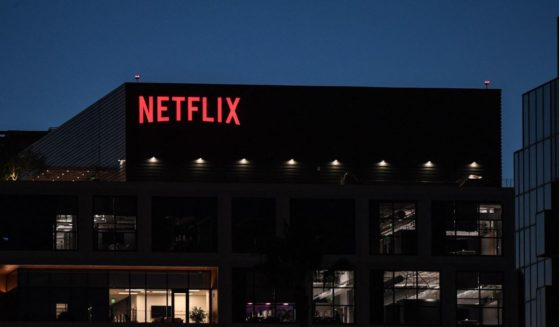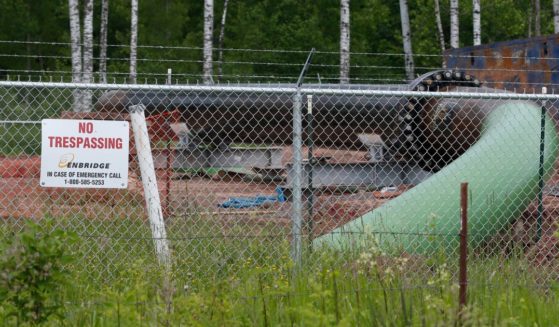American Farmers Are Killing Their Own Crops and Selling Cows - Here's Why
Due to droughts, American farmers are having to thin out their crops and sell livestock, which in turn is driving up food prices and adding to the overall economic downturn that Americans have been struggling with for two years.
According to a survey from the American Farm Bureau Federation, drought conditions have put the production of beef, dairy, wheat, vegetable, fruits and nuts at serious risk.
Droughts have persisted in the states throughout the Central Plains up to North Dakota, all the way west to California and all the way south to Texas.
This is nearly the whole region that is key to U.S. agriculture and makes up about half of the nation’s $364 billion agricultural production value, according to the AFBF.
“This includes 74% of beef cattle, responsible (in total) for 18% of U.S. agricultural production by value; 50% of dairy production, responsible (in total) for 11% of U.S. agricultural production by value, over 80% of wheat production by value and over 70% of vegetable, fruit and tree nut production by value,” the AFBA outlined.
But now farmers and ranchers are being forced to take drastic measures.
Most notably, there has been a significant increase from last year in farmers having to till under crops, remove fruit trees and even sell livestock.
“Those who reported tilling under crops because of drought conditions jumped from only 24% of respondents last year to 37% of respondents this year. Similarly, 33% of respondents reported destroying and removing orchard trees and other multiyear crops as prevalent or higher, up from only 17% last year,” the AFBF reported.
Across the region surveyed by the AFBF, respondents also expected average crop yields to be down 38 percent this year. Texas, Oklahoma and New Mexico are expected to have the biggest yield drops.
Meanwhile, ranchers are having to reduce their herd sizes. Many did so last year and told the AFBF that they had to do so again this year.
“Of the surprising 67% of respondents who reported reducing herd sizes in 2021, nearly 50% were further reducing their herd or flock this year, 37% were maintaining the reduced herd size and only 14% were building their headcount back up,” the AFBF reported.
Along with the 67 percent who had to reduce herd sizes last year, 76 percent also fallowed rangeland.
One promising sign, though, is that although ranchers have had to reduce herds and fallow land, many are holding onto their land.
But as herds are thinned out, these “smaller inventories of livestock across a region that supports over 70% of domestic beef production by value decreases production and drives up prices for consumers,” the AFBF noted.
“For cattle and beef, once the market processes the excess animals sent to slaughter and has a smaller breeding herd to operate off of, [price increases] could be six months to well over a year. For specialty crops it could be immediate upon harvest,” said Daniel Munch, an economist at the AFBF, according to CNN.
While the drought conditions most immediately impact ranchers and farmers, down the line it will affect every American as food prices rise. And it will not go away after just a season or two, even if the drought conditions end.
“The effects of this drought will be felt for years to come, not just by farmers and ranchers but also by consumers. Many farmers have had to make the devastating decision to sell off livestock they have spent years raising or destroy orchard trees that have grown for decades,” said Zippy Duvall, AFBF president, according to KMBC-TV.
Food prices have already been rising in the U.S. due to outrageously high inflation rates.
“The [consumer price index] for all food increased 1.0 percent from May 2022 to June 2022, and food prices were 10.4 percent higher than in June 2021,” the Department of Agriculture reported in July.
The USDA predicted that food prices across the board will continue rising throughout 2022 and into 2023.
These price increases are going to hurt all Americans, but particularly poor Americans, as The Heritage Foundation noted.
“For lower-income Americans, this situation is particularly troubling. Skyrocketing food prices are regressive and particularly damaging to them, as they spend a greater share of their after-tax income on food compared with higher-income Americans,” Heritage pointed out.
“Their trade-offs might not just be giving up a night at the movies or not going out to dinner. It might be far worse, such as not going to the doctor or not running the air conditioning.”
While the increase in food prices is nothing new due to inflation, the news of how drought conditions are wreaking havoc on crops and herds should have all Americans paying attention and preparing for the coming years.
These problems are not just hurting farmers. This will continue to affect every corner of American society.
Truth and Accuracy
We are committed to truth and accuracy in all of our journalism. Read our editorial standards.












